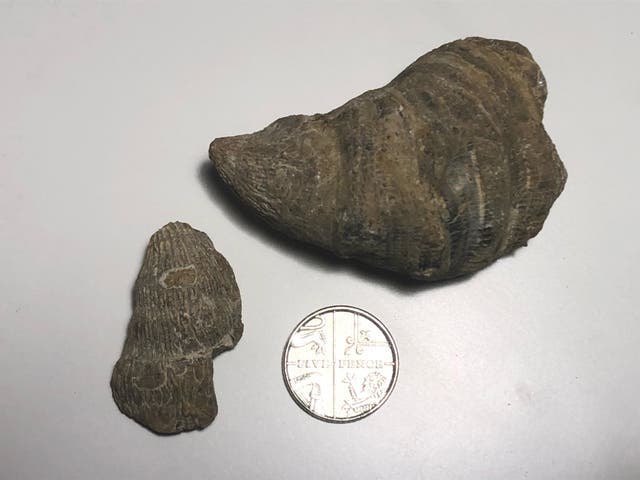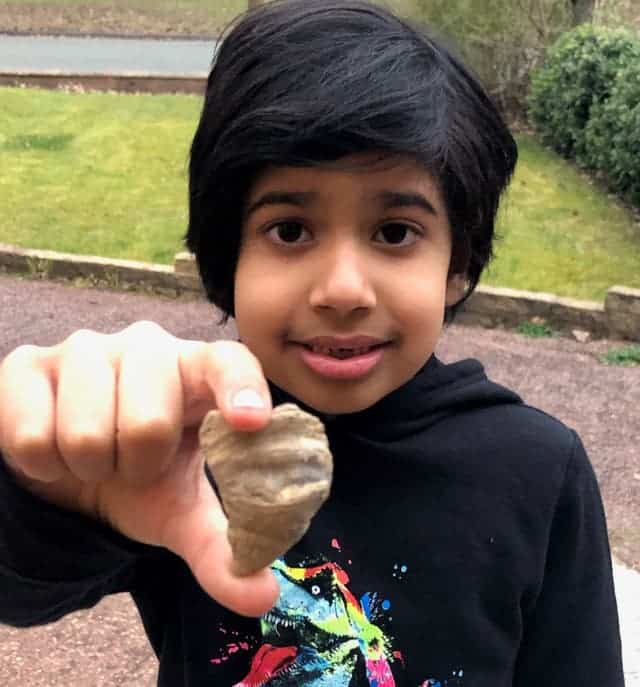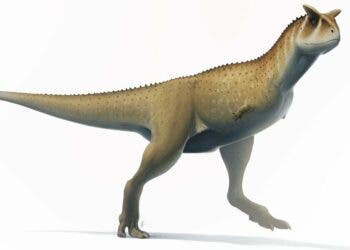A six-year-old boy in Walsall, England, is probably the youngest individual to ever make it into a Fossil Friday story. His discovery: a fossilized horn coral, several hundred million years old, that he uncovered in his family’s back yard with a fossil-hunting kit he received for Christmas.

Sid, or Siddak Singh Jhamat in full, said he was “excited” to make the discovery, and that he was just looking for worms. His father helped him identify what the fossil actually was through a fossils’ enthusiasts group on Facebook. Estimates place the specimen’s age between 251 and 488 million years old according to Vish Singh, said the boy’s father, and it is most likely a Rugosa coral.
Beginner’s luck
“I was just digging for worms and things like pottery and bricks and I just came across this rock which looked a bit like a horn and thought it could be a tooth or a claw or a horn, but it was actually a piece of coral which is called horn coral,” the schoolboy said.
“I was really excited about what it really was.”
Mr. Singh explains that his son found the “odd-shaped” horn coral in the soil in their back yard, next to “some smaller pieces”. Encouraged by his success, Sid went digging again the next day, finding a congealed block of sand. Locked inside this block were several little molluscs, seashells, and even a partial crinoid specimen.
During the time this coral fossil was still a living coral, the area that is the UK today was just one tiny part of the supercontinent Pangea, and it was also virtually all underwater — an inland lake.

The finding is quite surprising because Walsall, the area where the Singh family lives, isn’t really known for its fossils. Other areas of the UK, such as its suggestively named Jurassic Coast, are hotbeds for fossil hunters. Still, Mr. Singh says their garden has lots of natural clay outcroppings, and his son found the coral in one of these.
If anything, this unlikely event showcases that it’s never too early to start looking for fossils. It’s also a good reminder that fossils can, really, be anywhere. That being said, a large specimen such as the one unearthed by Sid and his trusty toy kit is quite a rare discovery even for hardened paleontologists.






